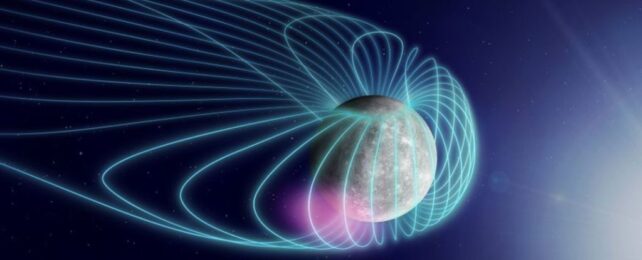Around planets that have a magnetosphere, something magical happens.
If you listen with the right instruments, you can hear chirping and whistling, almost like the singing of birds at dawn and dusk. These so-called chorus waves have been recorded at Earth, and Jupiter, and Saturn; and observed at Uranus and Neptune.
Now, led by astronomer Mitsunori Ozaki of Kanazawa University, scientists from Japan and France have detected them whistling around Mercury, barren and alone as it skirts the Sun.
This is interesting, because those other planets have a few things that Mercury does not: thick, lush atmospheres, and permanent radiation belts where solar particles become trapped in a planet's magnetic field.
Scientists say it's a discovery that could shed some light on the magnetic environment around Mercury, and how planetary magnetic fields in general are shaped by the solar wind.
Mercury doesn't have much of a magnetic field. It's a fairly bare chunk of rock, with a practically nonexistent atmosphere, too close to the Sun for comfort. It's constantly buffeted by radiation and the solar wind, too.
But this spare, excoriated world is harboring secrets, oh yes. Just this year, scientists finally discovered that Mercury, even with its pitiful magnetic field and atmosphere, has auroras, of its own strange kind.
Long before that discovery, though, scientists thought that Mercury might have chorus waves. These occur when energetic electrons become trapped in a planet's magnetosphere, spiraling along the magnetic field lines, and generating waves in the plasma.
These waves can be recorded and converted into sounds that vary depending on how and where the electrons are moving. You can hear, for example, whistler-mode waves recorded at Earth in the video below.

Mercury exploration has been sporadic and sparse, which means our understanding of its space environment is patchy. We've known about its magnetic field since Mariner 10 took observations in the 1970s.
But scientists are seeking to make up for the lack. And part of the Mercury BepiColombo mission, launched in 2018, is an instrument called MIO dedicated to studying the Mercurian magnetosphere.
That instrument is not quite in orbit yet; the gravity of the Sun makes orbital insertion tricky. But the spacecraft has conducted flybys of Mercury in 2021 and 2022 that recorded observations of Mercury's magnetic field.
And there, in the data collected by MIO, the researchers found clear evidence of whistler-mode waves in the magnetosphere of Mercury. But, because it's Mercury, there was something strange about them: they only appeared in a small part of Mercury's magnetosphere, in a wedge known as the dawn sector.
This suggested that there is some physical mechanism either promoting chorus waves in that region, or suppressing them everywhere else. The team conducted modeling and simulations, and determined that the transfer of energy from electrons to electromagnetic waves is more efficient in the dawn sector, leading to the generation of the whistles.

Further understanding and characterization of these chorus waves is going to require more observations, and more analysis. These first detections will allow the researchers to plan their investigations in detail, ahead of orbital insertion of MIO in 2025.
"To date, we still do not know whether Earth and Mercury have similar spatiotemporal properties of their electron-driven chorus," the researchers write.
"The present study paves the way for these challenging future investigations that will reveal how magnetized planet environments are shaped by the solar wind in our Solar System, with potential extrapolation to exoplanets and their interactions with stellar winds."
The research has been published in Nature Astronomy.
